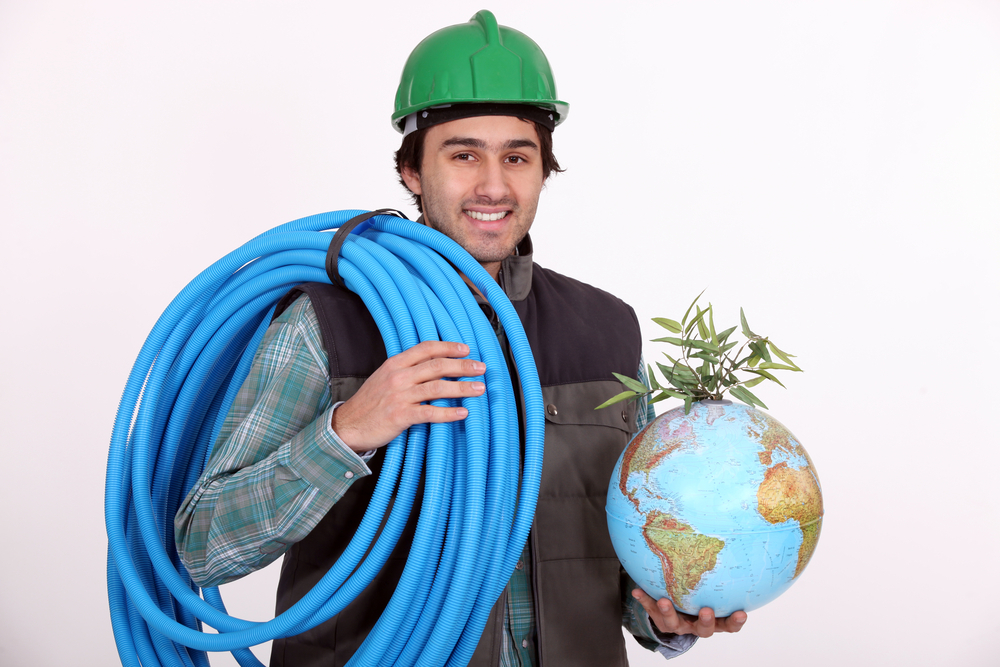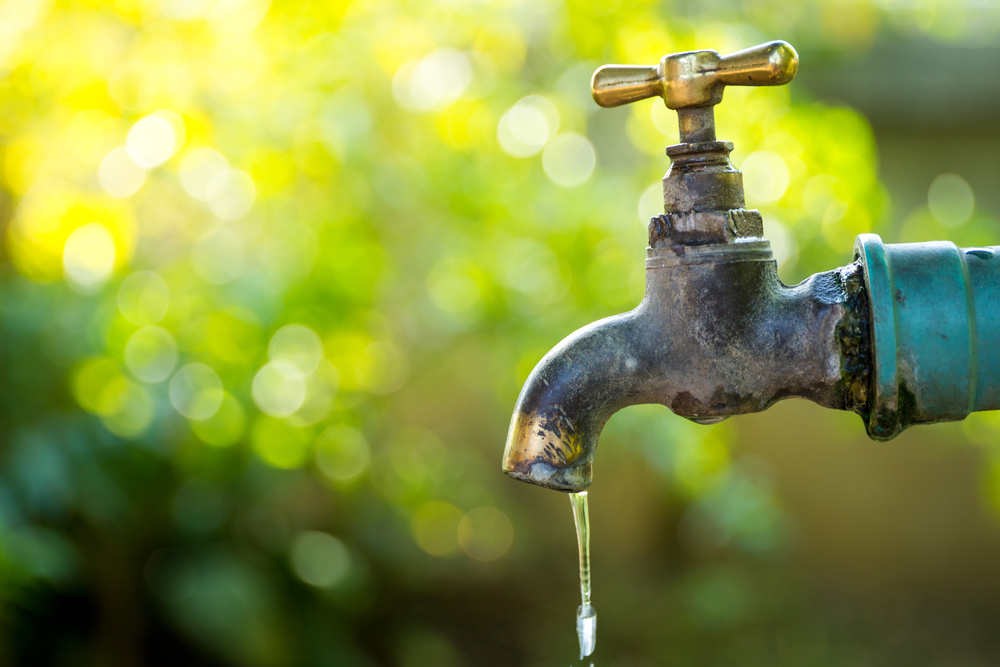The concept of “going green” goes much beyond energy-efficient lightsbulbs and recycling in the world of environmental consciousness of today. Making sustainable choices in our homes—especially with regard to our plumbing systems—is one sometimes disregarded approach to lower our environmental impact. Green plumbing comes in here.
Green plumbing is a collection of environmentally friendly methods and technology meant to limit negative effects on the surroundings, save water, and lower energy use. From adopting sustainable materials to installing water-saving fixtures, green plumbing has been increasingly important in helping to lessen the impact that conventional plumbing systems cause on the surroundings.
This change is about reconsidering how we use water and energy, so benefiting homeowners financially and so safeguarding the future of natural resources, not only about saving the planet. Often wasting water and energy, traditional plumbing methods help to damage the environment and deplete supplies. By offering wiser and more effective methods to handle the water and energy demands of our house, green plumbing methods seek to reverse this.
By the end of this article, you will know why green plumbing is important and learn doable ideas you could implement in your house right now to produce a more affordable, environmentally friendly space.

Why is Green Plumbing Important?
a. Environmental Benefits
Green plumbing also lessens energy usage. Traditional plumbing systems generally rely on energy-hungry water heaters or inefficient piping systems, which leads to excessive energy use. By updating to more energy-efficient plumbing solutions, homeowners may drastically lessen their carbon impact. Energy-efficient water heaters and increased insulation cut down on the energy needed to heat water, while low-flow fixtures lessen the demand for hot water in the first place.
Besides lowering water and energy usage, green plumbing also decreases the emission of dangerous substances into the environment. For instance, choosing natural cleaners over harsh chemicals can help prevent the contamination of local water supplies, making it safer for both wildlife and humans.
b. Cost Savings
In addition to the environmental benefits, green plumbing offers major financial advantages for homeowners. Implementing green plumbing practices can drastically cut water and energy expenditures. Low-flow fixtures, for example, consume less water without affecting functionality, enabling households cut down on water usage by up to 60%. Over time, these savings mount up, cutting utility expenses by hundreds of dollars per year.
Energy-efficient products, such as tankless water heaters, further add to cost savings. These systems heat water on demand rather than maintaining a tank of warm water around the clock, which substantially decreases energy expenditures. Additionally, by treating leaks early and updating to contemporary plumbing solutions, homeowners prevent costly repairs and lost resources.
The upfront expense of converting to green plumbing may seem overwhelming to some, but the long-term savings frequently outweigh the original outlay. Over time, you save the environment and start to put more money back in your pocket—a win-zag.
Tips for Implementing Green Plumbing in Your Home
You don’t have to revamp everything at once if you’re ready to make the plumbing system in your house more environmentally friendly. Your plumbing can be progressively switched to a greener, more sustainable system by just a few easy steps.
a. Install Low-Flow Fixtures
Among the easiest and most efficient green plumbing additions are low-flow fixtures. Low-flow toilets, faucets, and showerheads use far less water than conventional ones. For example, a low-flow showerhead might save water use by almost 50%, without compromising water pressure. Unlike previous types that might use up to 6 gallons per flush, low-flow toilets run about 1.6 gallons per flush.
These simple to install fixtures produce instant effects, which reduces monthly water bills and water usage.
b. Fix Leaks Promptly
Although a little leak might not seem like a major concern, over time it can cause notable water waste. Hundreds of gallons of water are wasted annually from with one leaky faucet. Quickly addressing leaks not only saves water but also helps to prevent possible structural damage to your house, thereby saving you from later expensive repairs.
Check your toilets, faucets and pipes often for leaks; fix them right away when you find them. Install a water leak detecting system if you’re not sure where leaks might be hidden. These gadgets early leak alarm helps you stop needless water loss.
c. Opt for Energy-Efficient Appliances
Select energy-efficient models when it’s time to update your plumbing appliances. Dishwashers classified under Energy Star, washing machines, and water heaters are made to run on less water and energy. Unlike conventional tank heaters that maintain a continuous supply of hot water, tankless water heaters, for example, heat water just when needed. This supplies on-demand hot water and lowers energy waste.
Although their initial cost may be more, energy-efficient appliances save a lot of money over water and energy bills.
d. Consider Greywater Recycling
One creative approach to cut domestic water consumption is greywater recycling. Greywater is rather clean wastewater coming from sources including washing machines, showers and sinks. Greywater recycling devices let you reuse this water for purposes like irrigation or toilet flushing instead of forwarding it straight down the drain.
Greywater recycling helps you cut the total water consumption in your house, particularly in places likely to experience drought or water scarcity. This environmentally friendly fix lowers water bills and lessens demand on nearby supplies.
e. Use Natural Cleaners
Many traditional cleaning agents have dangerous compounds that might poll aquatic life and compromise water sources. Using natural cleansers will help to make the plumbing in your house cleaner. Without adding poisons to the water system, basic materials like baking soda, vinegar, and lemon juice can clean drains, toilets, and pipes rather successfully.
Natural cleaners are safer for your family in addition to better for the surroundings. By lowering the risk of strong chemical exposure, they create a better living space.
f. Insulate Your Pipes
One reasonably priced approach to increase the effectiveness of your plumbing system is pipe insulation. Properly insulated pipes help to better retain heat, therefore lowering the energy needed to warm water. In colder months when water in exposed pipes can cool quickly, this is very helpful.
Insulating your pipes also helps stop winter freezing of your pipes, so preventing broken pipes and costly repairs. Maintaining a constant water temperature helps pipe insulation lower energy waste and guard your plumbing against damage.
g. Install a Rainwater Harvesting System
Usually for non-potable uses like watering plants, washing automobiles, or flushing toilets, rainwater harvesting is gathering and storing rainwater for later use. Using rainwater helps you to lower the demand on the main water source for your house, so preserving treated water for vital needs.
Simple barrel configurations to more advanced systems filtering and pumping water throughout your house define the variety of rainwater collecting systems. Having such a system installed will help to save water costs and increase the environmental friendliness and self-sufficiency of your house.
h. Upgrade to a Tankless Water Heater
If your house still runs a conventional water heater, think about switching to a tankless unit. Unlike conventional water heaters that continuously maintain a tank of hot water, tankless water heaters heat water just when it is needed, therefore greatly lowering energy use.
Apart from energy saving, tankless water heaters guarantee never running out of hot water, so ensuring you never run out during a shower or when doing dishes. They are a wise long-term investment since they occupy less space and have a longer lifetime than standard models.

Conclusion
Green plumbing is a necessary habit for everyone trying to lower their environmental impact and save money over time; it is not only a trend. Your house’s water and energy usage will be much lower if you choose energy-efficient appliances, address leaks, and install low-flow fixtures among other basic improvements. Beyond the advantages for the surroundings, these improvements result in significant financial savings, hence green plumbing is a sensible option for any homeowner.
Start with little actions and progressively include these environmentally friendly ideas into your house. Every every action counts toward a more sustainable future—from collecting rainwater to recycling greywater to just selecting ecological cleansers. Why then should one not delay? Starting your green plumbing adventure right now can help you to have a better, more efficient house.
Plumbing Services CA
https://maps.app.goo.gl/31Yt4rhDrainzNJ4A
(279) 203-0765
https://plumbingservicesca.com/
